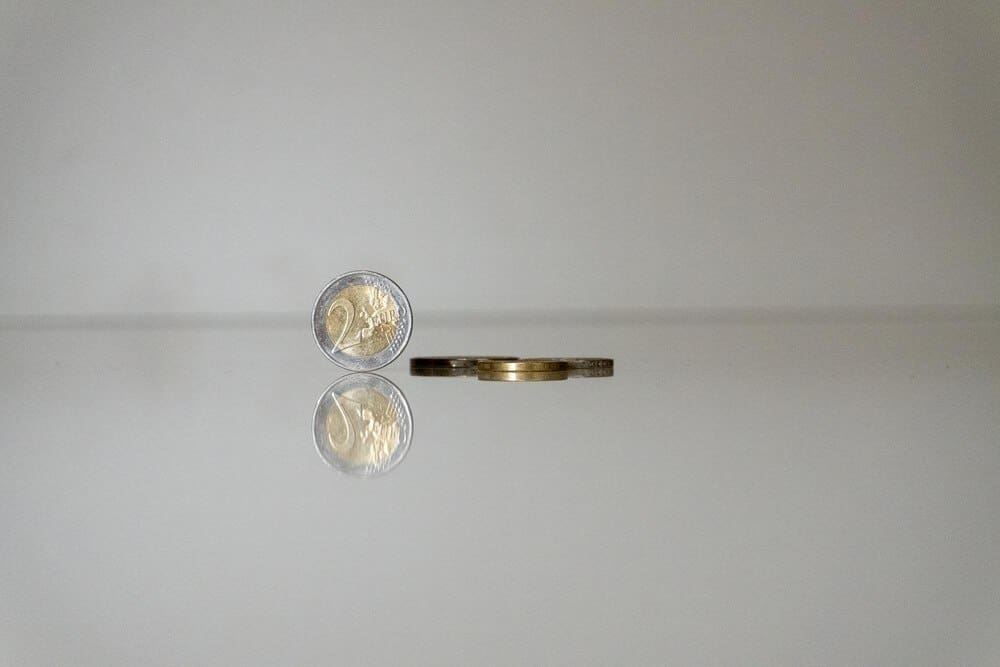In an era defined by extravagant displays of wealth, the late Ingvar Kamprad, the Swedish magnate who founded the global furniture giant IKEA, stood as a profound anomaly. Despite amassing a fortune estimated at over $58 billion at its peak, Kamprad championed a life of radical frugality, a practice now widely known as “stealth wealth.” For decades, until his passing in 2018, he famously drove a 20-year-old Volvo, flew economy class, and furnished his modest Swiss home with his own company’s products, not as a publicity stunt, but as a core tenet of his personal and business philosophy. His deliberate choice to live far below his means was driven by a deep-seated belief that thriftiness fosters efficiency, innovation, and a fundamental connection to the everyday customer his empire was built to serve.
What is “Stealth Wealth?”
The term “stealth wealth” describes a conscious and strategic decision by affluent individuals to live modestly and avoid the common trappings of extreme riches. It is not about being miserly or cheap for its own sake; rather, it’s an intentional lifestyle choice aimed at maintaining privacy, enhancing personal security, and prioritizing values beyond material accumulation. It is the antithesis of conspicuous consumption—the overt displays of luxury cars, mega-yachts, and designer logos meant to signal social status.
Individuals who practice stealth wealth deliberately obscure the true extent of their fortune. They might drive a reliable but unremarkable car, live in a comfortable but not ostentatious neighborhood, and wear clothes chosen for quality and comfort rather than brand recognition. The psychology behind this approach is multifaceted. For many, it’s a way to shield their families, particularly children, from the pressures and potential dangers of immense wealth, allowing them to grow up with a stronger work ethic and more grounded values.
Furthermore, this understated lifestyle helps them avoid unwanted attention, from media scrutiny to an endless stream of investment pitches and requests for financial handouts. At its core, stealth wealth is about control—control over one’s privacy, one’s values, and how one’s financial resources are deployed. It redefines “rich” not by what you can buy, but by the freedom and security you can preserve.
The Poster Child of Frugality: Ingvar Kamprad
No one embodied the principles of stealth wealth more completely than Ingvar Kamprad. His life was a masterclass in separating net worth from self-worth. His habits were so ingrained that they became legendary, forming the very bedrock of IKEA’s corporate identity.
The Volvo and the Economy Flights
Perhaps the most famous symbol of Kamprad’s thrift was his car. For nearly two decades, he drove a 1993 Volvo 240 GL. He resisted upgrading, arguing that the car was safe, ran perfectly, and had served him well. When he finally parted with it, it was not for a luxury sedan but simply because he was convinced it was no longer safe to drive.
His travel habits were similarly spartan. Despite having access to private jets, Kamprad insisted on flying economy class on commercial airlines, often using his IKEA loyalty card for points. He was frequently spotted taking the public bus to and from the airport and encouraged his executives to do the same. This wasn’t just about saving money; it was about staying connected to the reality of his customers and employees.
A Home Like Any Other
Kamprad’s primary residence for many years was a simple, single-story villa in Epalinges, Switzerland. It was comfortable but far from palatial, and naturally, it was furnished almost entirely with IKEA products he had assembled himself. He was known to shop at local grocery stores, often waiting until the late afternoon to buy produce and other goods at a discount. He even admitted to pocketing salt and pepper packets from restaurants, a habit that underscored his philosophy of “waste not, want not.”
Corporate Culture as a Reflection
Kamprad’s personal frugality was not a private quirk; it was the strategic foundation of the IKEA empire. He instilled this cost-consciousness into every facet of the business, from product design to supply chain logistics. The company’s mission to “create a better everyday life for the many people” was only possible through relentless efficiency and passing those savings on to the consumer.
He famously authored a manifesto titled A Testament of a Furniture Dealer, which codified his beliefs. In it, he wrote, “Waste of resources is a mortal sin at IKEA.” Employees were instructed to use both sides of a piece of paper, stay in budget-friendly hotels, and constantly seek out more cost-effective ways of working. This philosophy, born from Kamprad’s own character, became IKEA’s most powerful competitive advantage.
Why Would a Billionaire Choose Frugality?
To the outside observer, a billionaire’s choice to live like a millionaire—or even a thousandaire—can seem baffling. But for individuals like Kamprad, the motivations are deeply rooted in personal history, philosophy, and strategic thinking.
A Foundation of Scarcity
Many self-made billionaires, Kamprad included, grew up in environments of scarcity. He was raised on a small farm in the rocky, impoverished region of Småland in southern Sweden. This upbringing instilled in him a profound respect for resources and an innate understanding that every penny counts. This mindset, forged in hardship, often remains with entrepreneurs even after they achieve unimaginable success, creating a psychological anchor that prevents lifestyle inflation.
The Philosophical Choice: Values Over Valuables
For the wealthy, frugality is a philosophical choice, not a necessity. It represents a conscious decision to prioritize intangible assets—like family, integrity, and purpose—over material possessions. By avoiding the “golden handcuffs” of a lavish lifestyle, they maintain a sense of freedom and normalcy. Kamprad believed that opulence isolated leaders from their people and their customers, creating a dangerous disconnect from reality.
The Strategic Advantage
Frugality can also be a potent business strategy. For a brand like IKEA, the founder’s modest lifestyle lent immense credibility to its low-cost promise. It demonstrated an authentic commitment to value that resonated with customers worldwide. Internally, it set a powerful example for employees, fostering a culture where cost-saving was a shared responsibility and a source of pride. This discipline also frees up enormous amounts of capital that can be reinvested into the business or dedicated to philanthropic pursuits.
Other Billionaires on the Stealth Wealth Spectrum
While Kamprad was an extreme example, he is not alone. Several other billionaires have adopted elements of the stealth wealth philosophy, contrasting sharply with figures known for their conspicuous consumption, like President Donald Trump, whose personal brand is inextricably linked to gold-plated penthouses and public displays of immense wealth.
Warren Buffett, the “Oracle of Omaha,” is renowned for his modest lifestyle. He still lives in the same house in Omaha, Nebraska, that he purchased in 1958 for $31,500. His daily breakfast often comes from a McDonald’s drive-thru. For Buffett, wealth is a tool for compounding and allocation, not for personal indulgence.
Similarly, Meta CEO Mark Zuckerberg is famous for his uniform of a grey t-shirt, jeans, and sneakers. While he is not without luxuries, his public persona is built around simplicity. He has explained this as a way to reduce “decision fatigue,” allowing him to focus his mental energy on more important choices related to his company.
An even more extreme case is Chuck Feeney, the co-founder of Duty Free Shoppers. Feeney secretly and systematically gave away his entire $8 billion fortune to his foundation, The Atlantic Philanthropies, over his lifetime. He lived in a rented apartment, didn’t own a car, and flew coach until his final days, pioneering the concept of “Giving While Living.”
Actionable Lessons for the Everyday Investor
The habits of frugal billionaires offer more than just fascinating anecdotes; they provide a powerful blueprint for anyone seeking to build financial security and a meaningful life, regardless of their income.
Live Below Your Means, No Matter Your Means
The most fundamental lesson is to create a surplus. The gap between what you earn and what you spend is the seed corn of wealth. Whether you make $50,000 or $5 million a year, this principle remains the same. Consciously spending less than you make creates the capital needed for saving, investing, and achieving financial independence.
Focus on Value, Not Price Tags
Kamprad’s Volvo was not a status symbol; it was a reliable tool for transportation. Make purchasing decisions based on long-term utility and quality, not brand prestige. An expensive item that brings you genuine, lasting value is a better purchase than a cheap one that quickly breaks or an overpriced one bought merely for show.
Define Your Own “Rich Life”
Perhaps the most important takeaway is that money is a means, not an end. The practitioners of stealth wealth understand this implicitly. They use their financial resources to buy freedom, security, and the ability to focus on what they truly value. Ask yourself what a “rich life” means to you. Is it traveling, spending more time with family, starting a business, or retiring early? Align your financial habits with those goals, and you will find a far deeper sense of satisfaction than any luxury good can provide.
Ultimately, the surprising frugality of billionaires like Ingvar Kamprad reveals a profound truth about wealth. It is not about hoarding money but about a deliberate philosophy of life. It’s a strategy for maintaining control, staying grounded, and building a legacy of value over vanity. For anyone navigating their own financial journey, the principles of stealth wealth offer a timeless and powerful roadmap to achieving not just prosperity, but true well-being.








